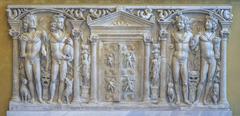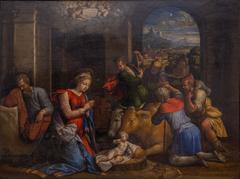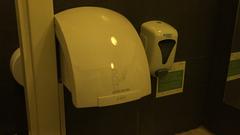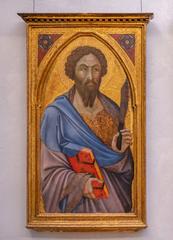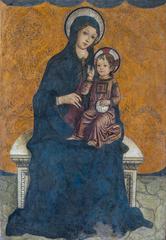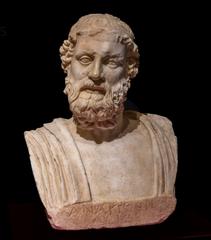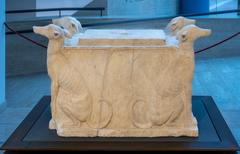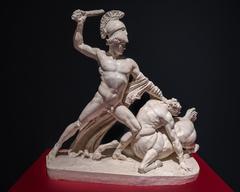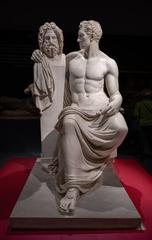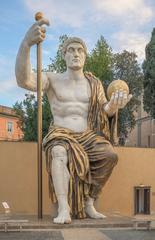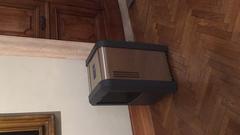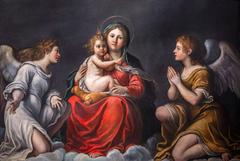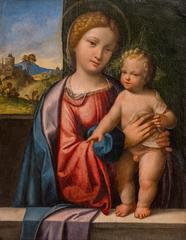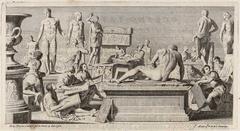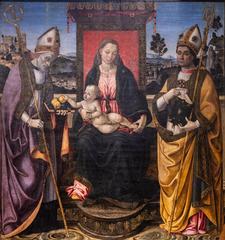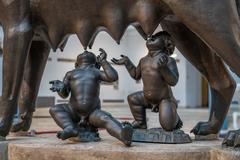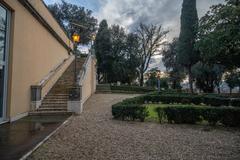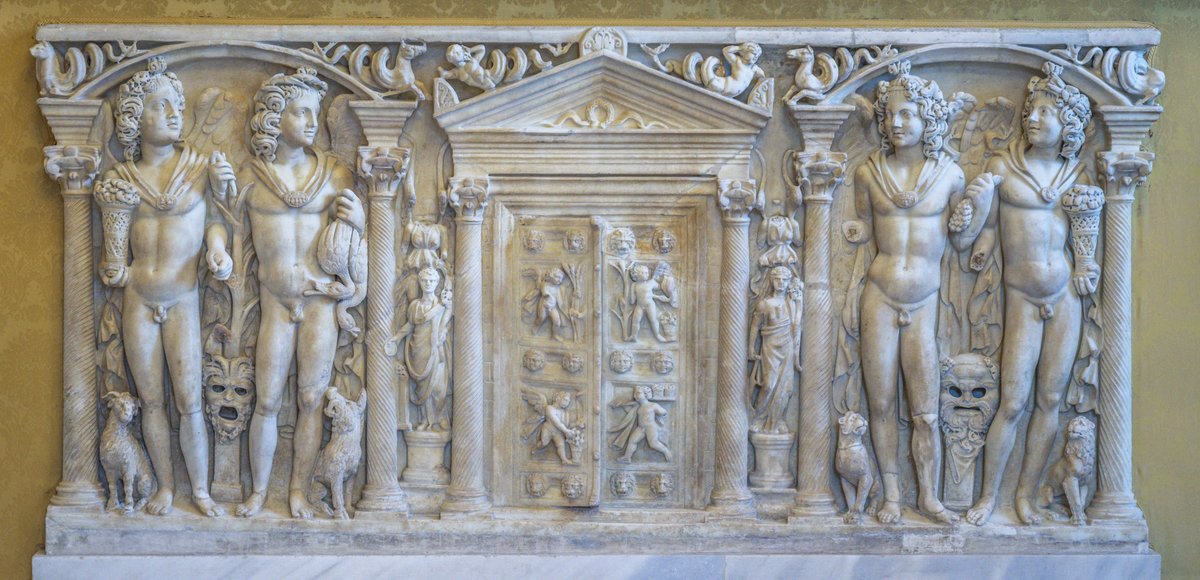
Capitoline Museums Rome: Visiting Hours, Tickets, and Complete Guide to Historical Sites
Date: 14/06/2025
Introduction
The Capitoline Museums, perched atop the legendary Capitoline Hill, represent a pioneering institution in the history of public museums. Established in 1471 with Pope Sixtus IV’s donation of ancient bronzes to the citizens of Rome, these museums are widely regarded as the world’s first public museum complex. Their collections span from antiquity to the Renaissance, and the museums themselves are housed within a harmonious ensemble of palaces, shaped by the genius of Michelangelo. As both a custodian of Rome’s layered heritage and a symbol of civic pride, the Capitoline Museums offer visitors a unique opportunity to explore the city’s imperial past, artistic achievements, and enduring identity as the “Eternal City” (capitolinemuseums.com; historyofinformation.com; History Tools).
Table of Contents
- Historical Overview
- Notable Works and Collections
- Visitor Information
- Visuals and Media
- Frequently Asked Questions (FAQ)
- Planning Your Visit
- References
Historical Overview
Origins and Early Development
The Capitoline Museums’ legacy began in 1471 with Pope Sixtus IV’s donation of significant ancient bronzes, including the famed Capitoline She-Wolf, to the people of Rome. These artifacts were initially displayed in the Palazzo dei Conservatori and on the Piazza del Campidoglio, establishing the Capitoline Hill as a center of civic culture (capitolinemuseums.com; historyofinformation.com).
Architectural Evolution and Michelangelo’s Influence
In the 16th century, Pope Paul III enlisted Michelangelo to redesign the Capitoline Hill’s urban landscape. His vision included a new piazza and the arrangement of three palaces: Palazzo dei Conservatori, Palazzo Nuovo, and Palazzo Senatorio. Michelangelo also relocated the Equestrian Statue of Marcus Aurelius to the piazza’s center, preserving an ancient masterpiece as a symbol of Rome’s enduring power (historyofinformation.com).
The Birth of the Public Museum
The Capitoline Museums officially opened to the public in 1734 under Pope Clement XII, following the acquisition of the Albani collection. This act established a new model for civic accessibility to art and history, influencing museum culture worldwide (capitolinemuseums.com).
Expansion and Enrichment
Throughout the 18th and 19th centuries, the museums expanded through new acquisitions, archaeological discoveries, and the creation of the Pinacoteca Capitolina, which brought works by Titian, Caravaggio, and Rubens into the collection. The 20th century saw further development, including the addition of the Underground Gallery connecting the palaces (capitolinemuseums.com).
The Museums During Turbulent Times
Napoleonic occupation in the early 19th century saw several masterpieces taken to France. Thanks to Antonio Canova, many returned after 1815, though some remain in the Louvre (capitolinemuseums.com).
Architectural and Urban Significance
The three main buildings—Palazzo dei Conservatori, Palazzo Nuovo, and Palazzo Senatorio—frame Michelangelo’s trapezoidal Piazza del Campidoglio. The museums’ integration with the Capitoline Hill’s ancient and political history underscores their unique role within the fabric of Rome (historyhit.com; help-tourists-in-rome.com).
Notable Works and Collections
- Equestrian Statue of Marcus Aurelius: The original, dating to the 2nd century CE, is displayed indoors, while a replica graces the piazza (historyofinformation.com).
- Capitoline She-Wolf: Iconic bronze symbol of Rome’s founding myth (capitolinemuseums.com).
- The Dying Gaul: A Hellenistic marble capturing the poignancy of defeat (Luxury Travel Diva).
- Capitoline Venus: A Roman copy of a celebrated Greek original.
- Spinario (Boy with Thorn): Exemplary bronze sculpture of ancient artistry.
- Paintings by Caravaggio, Titian, Rubens, Guercino: Displayed in the Pinacoteca Capitolina.
- Busts of Commodus, Constantine fragments, and more: Testaments to Rome’s imperial and artistic grandeur.
- Tabularium: Ancient Roman archive with panoramic Forum views.
Visitor Information
Visiting Hours
- Open: Tuesday to Sunday, 9:30 AM–7:30 PM (last entry 6:30 PM)
- Closed: Mondays and select holidays
- Tip: Check the official website for seasonal changes and updates.
Tickets and Prices
- General Admission: ~€15
- Reduced Rate: ~€7.50 (EU citizens 18–25)
- Free Entry: EU citizens under 18, residents of Rome, and on the first Sunday of each month
- Where to Buy: Online via official website, or at the ticket office in Palazzo dei Conservatori
Guided Tours and Audio Guides
- Guided Tours: Available in multiple languages; book online or onsite
- Audio Guides: Rent onsite or via mobile app for self-guided insight
Accessibility
- Wheelchair Access: Elevators, ramps, and accessible restrooms available
- Assistance: Service dogs permitted; contact museum in advance for personalized support
Nearby Attractions
- Roman Forum, Palatine Hill, Piazza Venezia, and Santa Maria in Aracoeli are within walking distance, ideal for a full day of Rome’s historical sites.
Special Events and Temporary Exhibitions
- The museum regularly hosts temporary exhibitions and cultural events. For current programming, consult the official website.
Best Photographic Spots
- Piazza del Campidoglio: Star-shaped pavement and replica Marcus Aurelius
- Museum Terraces: Panoramic views over the Roman Forum
- Caffarelli Terrace: Ideal for breathtaking cityscapes
Visitor Tips
- Buy tickets online to avoid queues
- Plan for early or late visits to skip peak crowds
- Wear comfortable shoes: cobblestones and stairs abound
- Combine with nearby sites for a complete Roman experience
Museum Layout and Building Highlights
| Building | Main Collections & Features | Accessibility & Facilities |
|---|---|---|
| Palazzo dei Conservatori | Ancient bronzes, Capitoline Wolf, Pinacoteca Capitolina, Constantine fragments, mosaics | Main entrance, lifts, cloakroom |
| Galleria Lapidaria | Lapidary inscriptions, funerary monuments, underground passage, Tabularium access | Barrier-free routes |
| Tabularium | Ancient archives, panoramic views of Roman Forum | Accessible via Galleria Lapidaria |
| Palazzo Nuovo | Dying Gaul, Capitoline Venus, Marforio, Spinario, busts, sarcophagi | Two floors, accessible by stairs |
| Terrazza Caffarelli | Panoramic terrace, café/refreshments | Separate entrance, accessible |
Visuals and Media
The Capitoline Museums offer virtual tours and interactive maps on their official website, allowing you to preview highlights and plan your visit. Explore high-quality images and videos with alt text such as “Capitoline Museums visiting hours sign,” “Equestrian Statue of Marcus Aurelius at Capitoline Museums,” and “Rome historical sites.” Consider using an interactive map to navigate the complex and its surroundings.
Frequently Asked Questions (FAQ)
Q: What are the Capitoline Museums’ opening hours?
A: Tuesday to Sunday, 9:30 AM–7:30 PM; closed Mondays.
Q: How much are tickets?
A: Standard adult tickets are about €15. Discounts are available for EU citizens aged 18–25; free entry for those under 18 and on the first Sunday of the month.
Q: Are the museums wheelchair accessible?
A: Yes, with elevators, ramps, and adapted restrooms.
Q: Are guided tours and audio guides available?
A: Yes, both can be booked online or onsite.
Q: Can I take photos?
A: Photography without flash is permitted in most areas; some rooms may have restrictions.
Q: What other historical sites are nearby?
A: The Roman Forum, Palatine Hill, and Piazza Venezia are adjacent and easily visited together.
Planning Your Visit
For an optimal experience:
- Purchase tickets online to guarantee entry and save time.
- Download the museum app or rent an audio guide for in-depth exploration.
- Check for temporary exhibitions and special events on the official website.
- Use public transport (Metro Colosseo, Line B) for easy access.
- Explore nearby sites for a comprehensive day in Rome’s historic core.
Tip: The Caffarelli Terrace café is perfect for a relaxing break with panoramic views.
Summary of Key Visitor Information
The Capitoline Museums stand as an extraordinary beacon of Rome’s cultural, political, and artistic history. As the world’s first public museum, their collections and architecture offer a uniquely immersive journey for all visitors. Accessible facilities, guided tours, and digital resources ensure a rewarding visit, while proximity to other major sites makes them the central hub for exploring Rome’s historic heart. Plan ahead, use official resources, and embrace the museums’ rich offerings for an unforgettable Roman experience (capitolinemuseums.com; History Tools).
References
- Capitoline Museums Official Site (capitolinemuseums.com)
- The Capitoline Museums - History of Information (historyofinformation.com)
- Capitoline Museums: A Beacon of Roman History and Culture, History Tools (History Tools)
- Capitoline Museums Visiting Hours, Tickets, and History: Your Complete Guide to Rome’s Historical Site, The Museum Insiders (The Museum Insiders)
- Guide to the Capitoline Museum in Rome, The Geographical Cure (The Geographical Cure)
- Why is the Musei Capitolini Important in Rome?, Luxury Travel Diva (Luxury Travel Diva)
- Musei Capitolini, History Hit (historyhit.com)
- Help Tourists in Rome - Capitoline Museums Guide (help-tourists-in-rome.com)
